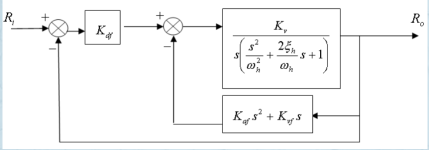Peter,
I have been following all of your posts since 2009. We (PLCS.NET forum), are all amazed at your acquired empirical knowledge to identify a LOOP characteristic from simple model description, and then offer the best strategical approach to resolve.
We use the Delta RMC products for EXPERT velocity and pressure control of our processes, and tuning is easy with RMC Tools software. Hydraulic positioning and pressure control are easy with your Delta products.
But, currently, we are treading in unfamiliar territory. We are heating a tank of oil media, but there is about a one-hour thermal lag between CV command and PV measured response.
We have a square central tank that the process takes place. The oil media in the main central tank is in direct contact with the manufactured goods to be heated. Thus the final PV (Process Variable).
The central tank is made of Stainless Steel (which has VERY LOW thermal conductivity). The central process tank is surrounded by another Stainless Steel tank of a different heating oil media.
The heating supply is electric resistance strip heaters surrounding the exterior of the outer tank.
What we observed though strip-chart data acquisition that there is about a one-hour delay between heat applied to the strip heaters to a detectable increase in internal tank process PV.
We also observed, once the external media is heated, taking away the CV does not net a balanced decay. Heat applied is sluggish, heat decay is 10 times slower.
We assume aggressive P and I gains will cause us oscillation due to the CV to PV delays.
Many of your posts speak about poles, and other terms that are above my experience.
Can you describe a possible approach to a control loop solution?
Also note, we are not limited to a single PID only loop, but are open to dynamic gain adjustment, if prudent. (Or other Min/Max CV Strategies)
Thank You
Plastic
I have been following all of your posts since 2009. We (PLCS.NET forum), are all amazed at your acquired empirical knowledge to identify a LOOP characteristic from simple model description, and then offer the best strategical approach to resolve.
We use the Delta RMC products for EXPERT velocity and pressure control of our processes, and tuning is easy with RMC Tools software. Hydraulic positioning and pressure control are easy with your Delta products.
But, currently, we are treading in unfamiliar territory. We are heating a tank of oil media, but there is about a one-hour thermal lag between CV command and PV measured response.
We have a square central tank that the process takes place. The oil media in the main central tank is in direct contact with the manufactured goods to be heated. Thus the final PV (Process Variable).
The central tank is made of Stainless Steel (which has VERY LOW thermal conductivity). The central process tank is surrounded by another Stainless Steel tank of a different heating oil media.
The heating supply is electric resistance strip heaters surrounding the exterior of the outer tank.
What we observed though strip-chart data acquisition that there is about a one-hour delay between heat applied to the strip heaters to a detectable increase in internal tank process PV.
We also observed, once the external media is heated, taking away the CV does not net a balanced decay. Heat applied is sluggish, heat decay is 10 times slower.
We assume aggressive P and I gains will cause us oscillation due to the CV to PV delays.
Many of your posts speak about poles, and other terms that are above my experience.
Can you describe a possible approach to a control loop solution?
Also note, we are not limited to a single PID only loop, but are open to dynamic gain adjustment, if prudent. (Or other Min/Max CV Strategies)
Thank You
Plastic







